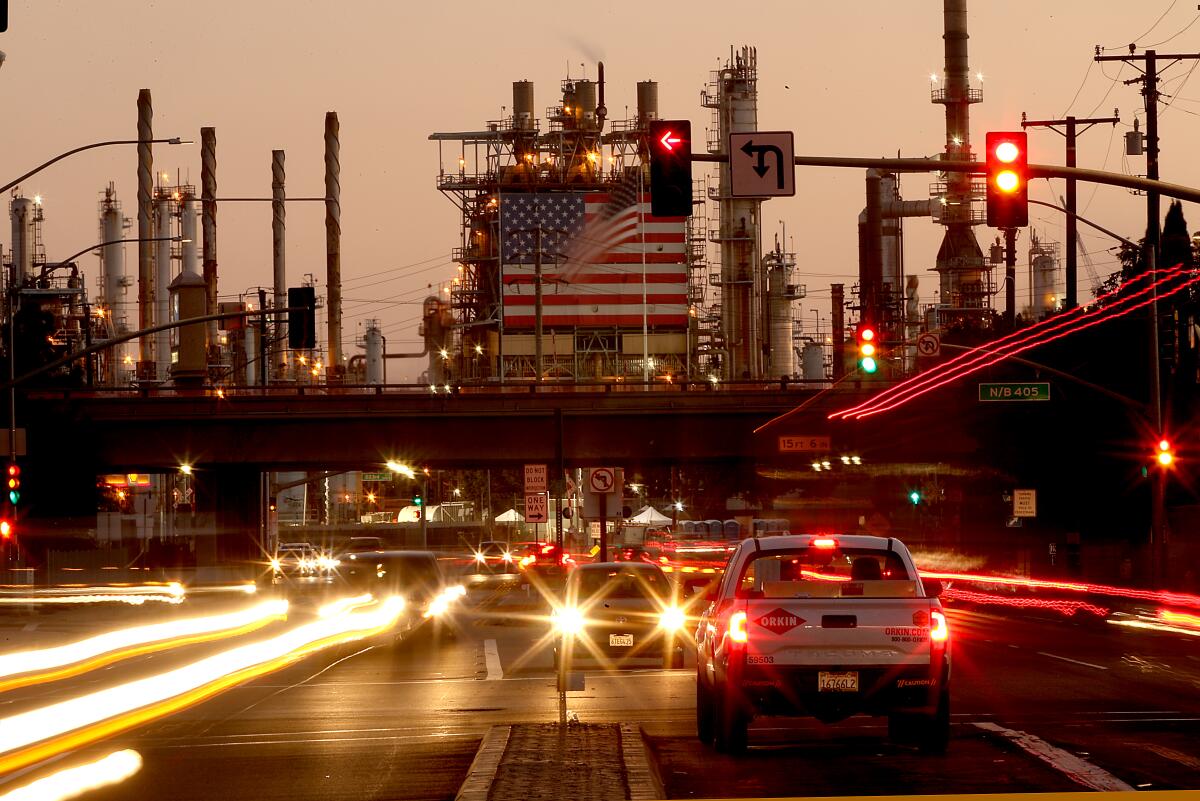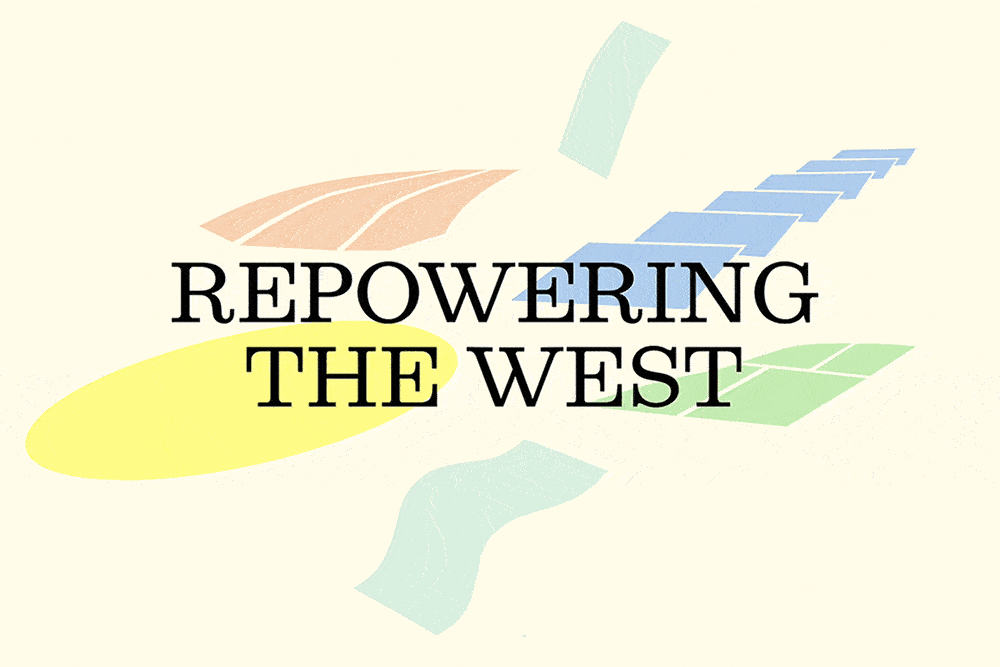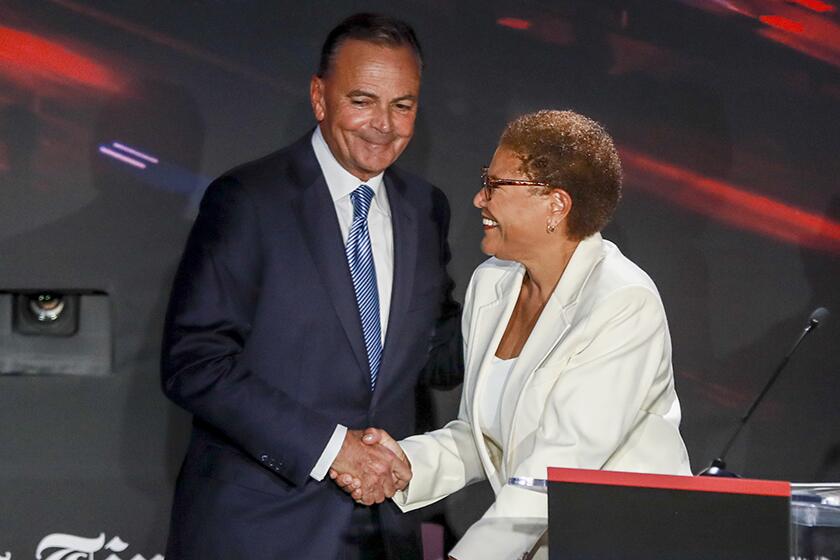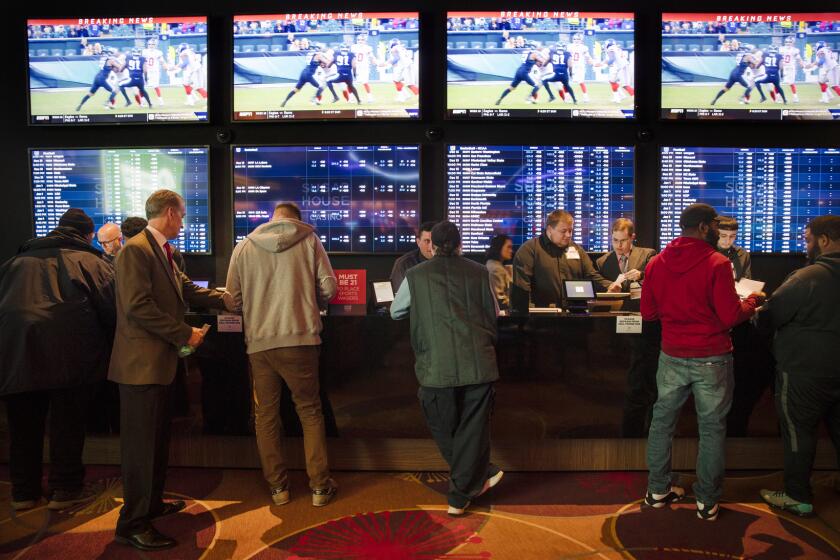Majority of voters favor gasoline-car phaseout. But all-electric goal faces tough opposition

- Share via
In August, California regulators issued a mandate both dramatic and historic: Ban the sale of most new gasoline-powered cars and light trucks by 2035, in favor of electric vehicles.
So far, a majority of California voters back the move, according to a UC Berkeley Institute of Governmental Studies poll co-sponsored by the Los Angeles Times. Fifty-five percent of registered voters favor the mandate and 39% oppose it.
Support for the mandate was fairly widespread among voters of different ages, races and ethnicities. The biggest dividing line is politics, with conservative voters opposed to the mandate and liberals supporting it.
On electric vehicles more than on most issues, however, even a minority in opposition could seriously hold back the policy’s success because voters are also consumers who will be buying cars and trucks over the next decade.
Overall, just over 1 in 4 California voters think the state is going too fast on its policies to combat climate change, with another 1 in 4 saying the pace is about right.
But the largest bloc, just under 4 in 10, say the state is not moving fast enough. Self-identified liberals dominate that group; the too-fast side is dominated by self-identified conservatives.
On another major energy policy issue, a large majority of voters back the plan the Legislature and Gov. Gavin Newsom approved in September to keep the Diablo Canyon nuclear generating station open for an additional five years. Newsom proposed the plan to help the state avoid power shortages while additional solar, wind and other renewable sources are built.
Voters overall support the Diablo Canyon plan 56% to 19%, with 25% undecided.
Although the plan to extend the life of the state’s only nuclear power plant came from Newsom, conservative voters are the most supportive — more than two-thirds of them are in favor.
Liberals are the least supportive, reflecting their long-standing skepticism about nuclear power. Even among those who identify as “strongly liberal,” however, supporters outnumber opponents 43% to 29%.
Male voters support keeping Diablo Canyon open significantly more than women, with 72% of men and 41% of women in favor.
Wind turbines, solar panels and power lines are needed to confront climate change. But they’re also reshaping the West — and not always for the better.
The electric vehicle mandate from the California Air Resources Board aims for dramatic cuts in greenhouse gases and other pollutants. About 40% of California’s greenhouse gas emissions waft up from cars, trucks, ships, trains and planes. To meet the state’s ambitious plan for a carbon-neutral California by 2045, policymakers believe getting strict with transportation is essential.
The plan also carries significant stakes for national policy. California, for decades the nation’s leader in reducing pollution from transportation, has taken the lead on mandates and incentives to push adoption of electric-powered vehicles. Just as California set the pace for other states’ emission limits on gasoline and diesel engines, more than a dozen states are following its lead on rules to reduce motor vehicle emissions.
The state’s plan to meet the 2035 goal: restrict the supply of new internal combustion cars while encouraging people to buy electric cars, in part through state incentives, financial and otherwise.
The poll indicates that goal could be hard to hit. Although a majority of voters support the mandate as a matter of policy, only 20% say they’re likely to go all-electric next time they shop for a new car or truck. About 4 in 10 say they’d favor a plug-in hybrid, while 3 in 10 say they’re likely to buy another traditional gasoline-powered car. A big expansion of the number of plug-in hybrids would move the state closer to its climate goals, but would not meet them fully.
In order to get to 100% new electric vehicles by 2035 from the current 16%, state officials are aiming for electric vehicles to be 35% of sales by 2026 and 68% by 2030. If sales of electric vehicles fall far short of that, the 100% goal for 2035 might require adjustment. It’s happened before: In the 1990s, the California Air Resources Board pulled back on zero-emissions mandates when it became clear that automakers weren’t going to meet them.
The billionaire developer still trails by double digits among likely voters, but the race has tightened significantly since August.
The fact that only 20% of voters plan to buy an electric vehicle doesn’t mean the mandate is doomed, at least not in the early days. Commercial fleet sales are expected to make up a large portion of EV sales, as businesses decide that switching can save them money, with company-installed banks of chargers reducing worries about the vehicles’ range.
The consumer market is a different story. Asked what most discouraged them from going all-electric, voters most often mentioned cost, with range anxiety and lack of public charging stations also prominently mentioned.
Although the average cost of a new electric car sits at $60,000, that’s expected to float down as more affordable electric models are introduced over the next few years. Billions in state and federal dollars will be spent on building out a public charger infrastructure, which is in poor shape.
Jessica Caldwell, automotive market analyst at Edmunds, which tracks auto sales, said she’s not surprised at the opposition number because a lot of people generally oppose government mandates. Whether the findings indicate longer-term opposition to buying an electric car or truck is worth a close watch, she said.
“It’s hard to envision what the future looks like from 2022,” she said.
More than 100 new EV models will be introduced over the next few years, many of them a lot more affordable than what’s available today, Caldwell said.
Opposition to the mandate appears to be overwhelmingly ideological, and so does skepticism about electric vehicles overall. Voters who identify as conservatives oppose the mandate by large margins. Self-identified strong liberals back it 88% to 8%. Moderates back it 53% to 40%.
Liberals significantly outnumber conservatives in California, but, again, the opponents, whether moderate or conservative, are car buyers too.
Fewer than 1 in 10 conservatives said they expect to buy an EV, while almost four times as many liberals said they will. There’s also a significant divide by incomes, with Californians who earn more than $150,000 a year significantly more likely to say they expect to buy an EV and less likely to cite cost as a deterrent.
Although some commentators have suggested that support for the electric vehicle mandate comes only from white liberals and that Latino voters and immigrant communities would oppose it, the poll rebuts that.
Support for the mandate among Latino voters is virtually identical to support among white voters. Those voters who were born outside the U.S. support the plan slightly more than those who are native born. Support among Black voters, 60%, is also slightly higher than among white voters, 53%.
Tax measure appears at risk as well. Governor seems headed to easy reelection.
There is a significant difference by education, with those voters who have a high school education or less split about evenly on the idea, while those with a college degree or higher support it by roughly 2 to 1.
On the question of whether the state is moving too fast in adopting policies to combat climate change, there’s a big divide by age in addition to the ideological split: Almost half of voters younger than 30 say the state isn’t moving fast enough; voters 65 and older are about evenly divided among the three views — too fast, too slow or about right.
Among Latino, Black and Asian voters, about 4 in 10 say the state isn’t moving fast enough. Among white voters, about one-third hold each of the three views, reflecting the larger number of conservatives in the white population.
The Berkeley IGS poll was conducted online Sept. 22-27 among 8,725 California registered voters. The sample was weighted to match census and voter registration benchmarks. Because of weighting, precise estimates of the margin of error are difficult, but the results are estimated to have a margin of error of approximately 2 percentage points in either direction for the full sample.










